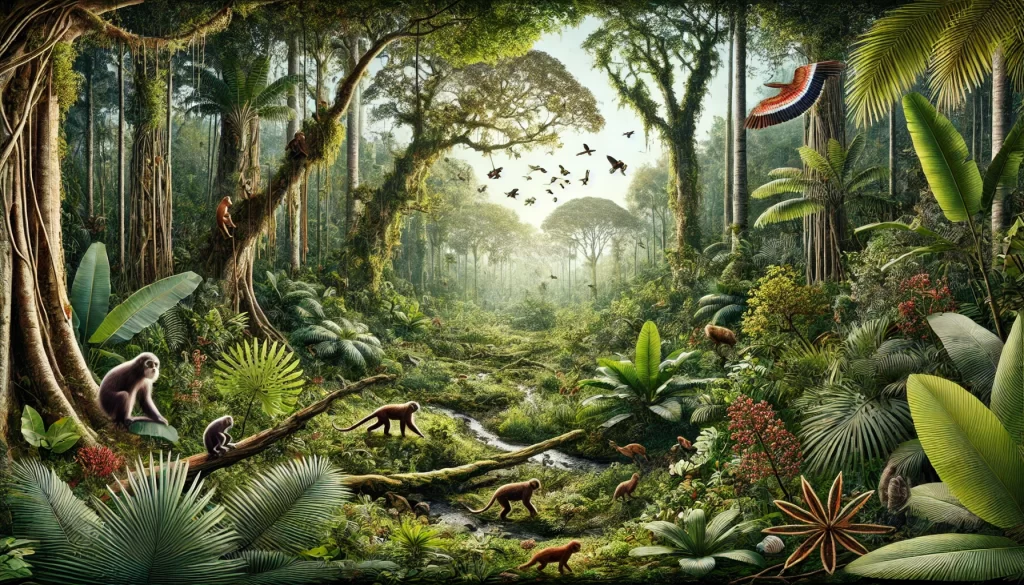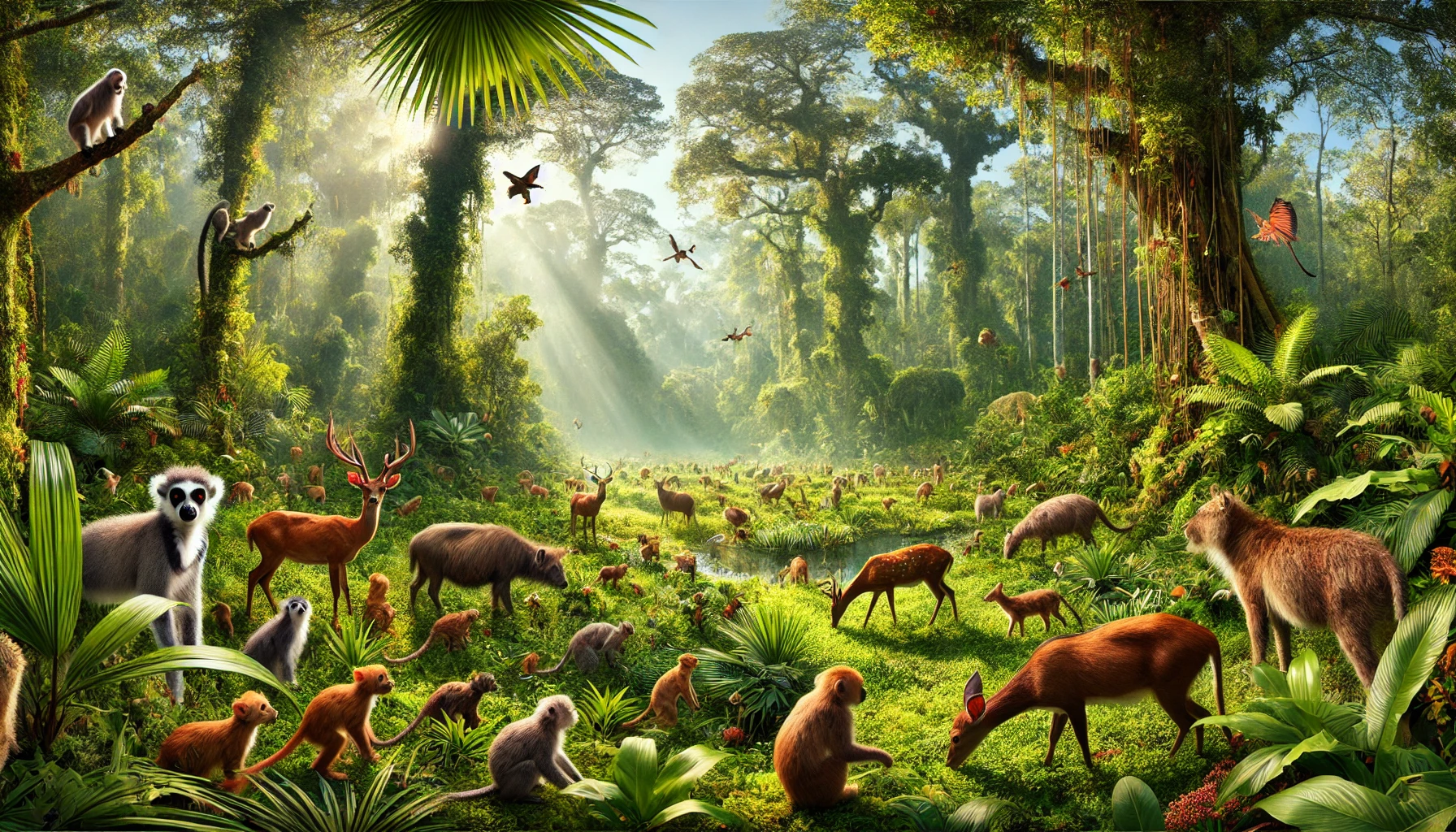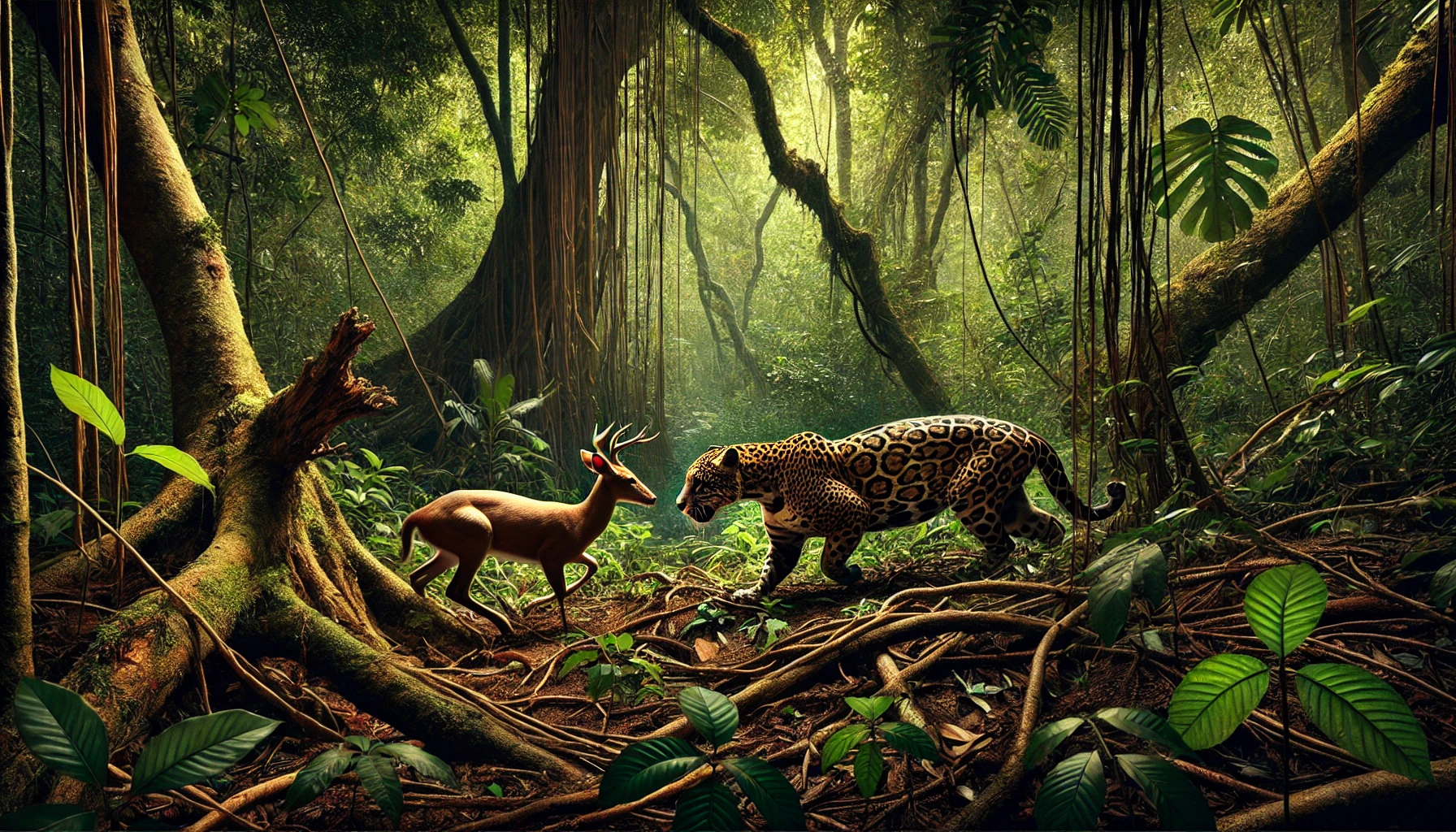Table of Contents
The food web for tropical forest ecosystems is a remarkable network that sustains one of Earth’s most diverse and vibrant environments. From the tiniest insects to the largest predators, each species plays a crucial role in maintaining the delicate balance of life. Understanding the food web for tropical forests helps us appreciate the intricate connections that make these ecosystems so unique. In this article, we’ll explore how these food webs operate, the roles different organisms play, and why preserving this balance is essential for the health of our planet.
What is a Food Web for Tropical Forest?
A food web for tropical forests is a complex system of interconnected food chains that demonstrate how energy and nutrients flow through an ecosystem. Unlike a simple food chain, which follows a linear path, a food web shows the numerous feeding relationships between different species. This web is particularly complex in tropical forests due to the high biodiversity.
The Role of Producers in the Tropical Forest Food Web
Producers, mainly plants and trees, are the foundation of the food web for tropical forests. They use sunlight to produce energy through photosynthesis, which fuels the ecosystem. In a tropical forest, these producers range from towering trees to trimmed shrubs and aquatic plants in streams and rivers.
These plants provide food and shelter for herbivores, which, in turn, support higher-level consumers. The vast diversity of plant life in tropical forests ensures that energy constantly flows through the food web, supporting various species. The health of these producers directly impacts the entire ecosystem, making them a critical component of the food web for tropical forests.
Primary Consumers: The Herbivores of the Tropical Forest
Primary consumers are herbivores that feed directly on plants and other producers. In the food web for tropical forests, these animals include deer, monkeys, and various insects. These herbivores play a vital role in transferring energy from plants to the rest of the food web. Plant consumption provides power to the predators that feed on them.
Herbivores also help in seed dispersal, aid in the growth of new plants, and support the food web. The diversity of herbivores in tropical forests ensures that different plants are consumed, maintaining the balance of the ecosystem. These primary consumers are necessary for the food web for tropical forests to maintain, as there would be no means to transfer energy from producers to higher-level consumers.

Secondary Consumers: The Predators of the Tropical Forest
The food web for tropical forests includes animals like big cats, birds of prey, and snakes. These predators play a crucial role in controlling the population of herbivores, ensuring that no single species dominates the ecosystem. Secondary consumers help maintain the food web balance by keeping herbivore populations in check.
The Role of Decomposers in the Tropical Forest Food Web
Decomposers are the organisms that break down dead plants and animals, returning nutrients to the soil. In the food web for tropical forests, decomposers include fungi, bacteria, and insects like beetles. These organisms are vital in recycling nutrients, ensuring fertile soil, and supporting plant growth.
Without decomposers, dead organic matter would accumulate, leading to a breakdown in the food web. The nutrients released by decomposers are absorbed by plants, which start the energy cycle anew. This process is essential for the health of the tropical forest ecosystem, making decomposers an integral part of the food web for tropical forests.
Human Impact on the Food Web for Tropical Forests
Human activities, such as deforestation and pollution, significantly impact the food web of tropical forests. When forests are cleared for agriculture or urban development, the intricate balance of the food web is disrupted. Species that rely on specific plants or habitats may struggle to survive, leading to declining biodiversity.
Pollution, particularly chemicals and waste, can harm plants and animals, further disrupting the food web. For example, pollutants can affect the health of primary producers, reducing the energy available to herbivores and, in turn, to predators. Human-induced changes to the environment threaten the stability of the food web for tropical forests, making it imperative to adopt sustainable practices that protect these vital ecosystems.
Conservation Efforts to Protect the Tropical Forest Food Web
Conservation efforts are crucial in maintaining the balance of the food web for tropical forests. Protecting large forest areas from deforestation and degradation helps preserve the habitats that various species need. Efforts to restore damaged ecosystems, such as reforestation and the protection of endangered species, also contribute to the stability of the food web.
Also Read: Tropical Rainforest Food Web: Secrets of Nature’s Hidden Battles
Education and awareness campaigns are essential in promoting the importance of tropical forests and the need to protect them. Understanding the food web for tropical forests and the role each species plays makes people more likely to support conservation initiatives. These efforts are vital in ensuring that the delicate balance of these ecosystems is maintained for future generations.
The food web for tropical forests is a delicate and complex system that sustains one of the most biodiverse ecosystems on the planet. From the towering trees that produce energy to the predators that maintain balance, each component of the food web plays a crucial role. However, human activities threaten this balance, making adopting sustainable practices and supporting conservation efforts essential.




